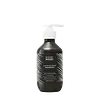What's inside
What's inside
 Key Ingredients
Key Ingredients

 Benefits
Benefits

 Concerns
Concerns

 Ingredients Side-by-side
Ingredients Side-by-side

Water
Skin ConditioningSodium Cocoyl Isethionate
CleansingSodium Lauroyl Methyl Isethionate
CleansingLauryl Glucoside
CleansingDisteareth-75 Ipdi
Propanediol
SolventHydrolyzed Rice Protein
Skin ConditioningHydrolyzed Vegetable Protein
Skin ConditioningPereskia Aculeata Callus Extract
Panthenol
Skin ConditioningCamellia Sinensis Leaf Extract
AntimicrobialAlanine
MaskingArginine
MaskingAspartic Acid
MaskingGlycine
BufferingHistidine
HumectantIsoleucine
Skin ConditioningPhenylalanine
MaskingProline
Skin ConditioningSerine
MaskingThreonine
Valine
MaskingCitric Acid
BufferingPCA
HumectantMomordica Cochinchinensis Seed Extract
Skin ConditioningSodium PCA
HumectantHelianthus Annuus Seed Oil
EmollientLactobacillus Ferment
Skin ConditioningSodium Carrageenan
Emulsion StabilisingGuar Hydroxypropyltrimonium Chloride
Skin ConditioningSodium Lactate
BufferingTetrasodium Glutamate Diacetate
Glycerin
HumectantCaprylyl Glycol
EmollientEthylhexylglycerin
Skin ConditioningPotassium Sorbate
PreservativeSodium Benzoate
MaskingPhenoxyethanol
PreservativeParfum
MaskingBenzyl Salicylate
PerfumingLimonene
PerfumingLinalool
PerfumingWater, Sodium Cocoyl Isethionate, Sodium Lauroyl Methyl Isethionate, Lauryl Glucoside, Disteareth-75 Ipdi, Propanediol, Hydrolyzed Rice Protein, Hydrolyzed Vegetable Protein, Pereskia Aculeata Callus Extract, Panthenol, Camellia Sinensis Leaf Extract, Alanine, Arginine, Aspartic Acid, Glycine, Histidine, Isoleucine, Phenylalanine, Proline, Serine, Threonine, Valine, Citric Acid, PCA, Momordica Cochinchinensis Seed Extract, Sodium PCA, Helianthus Annuus Seed Oil, Lactobacillus Ferment, Sodium Carrageenan, Guar Hydroxypropyltrimonium Chloride, Sodium Lactate, Tetrasodium Glutamate Diacetate, Glycerin, Caprylyl Glycol, Ethylhexylglycerin, Potassium Sorbate, Sodium Benzoate, Phenoxyethanol, Parfum, Benzyl Salicylate, Limonene, Linalool
Aloe Barbadensis Leaf Juice
Skin ConditioningSodium Methyl Cocoyl Taurate
CleansingCocamidopropyl Betaine
CleansingDecyl Glucoside
CleansingCoco-Glucoside
CleansingGlyceryl Oleate
EmollientPropanediol
SolventPiroctone Olamine
PreservativeMentha Piperita Oil
MaskingHydrolyzed Quinoa
Skin ConditioningPolyquaternium-10
Potassium Sorbate
PreservativeOlea Europaea Fruit Oil
MaskingHippophae Rhamnoides Fruit Oil
Skin ProtectingHydrolyzed Jojoba Esters
Skin ConditioningLinum Usitatissimum Seed Oil
PerfumingSqualane
EmollientHelianthus Annuus Seed Oil
EmollientHibiscus Sabdariffa Flower Extract
Skin ConditioningCamellia Sinensis Extract
AntioxidantBertholletia Excelsa Seed Oil
EmollientMacadamia Ternifolia Seed Oil
EmollientRosmarinus Officinalis Leaf Extract
AntimicrobialPentylene Glycol
Skin ConditioningCaprylyl Glycol
EmollientEthylhexylglycerin
Skin ConditioningCitric Acid
BufferingAloe Barbadensis Leaf Juice, Sodium Methyl Cocoyl Taurate, Cocamidopropyl Betaine, Decyl Glucoside, Coco-Glucoside, Glyceryl Oleate, Propanediol, Piroctone Olamine, Mentha Piperita Oil, Hydrolyzed Quinoa, Polyquaternium-10, Potassium Sorbate, Olea Europaea Fruit Oil, Hippophae Rhamnoides Fruit Oil, Hydrolyzed Jojoba Esters, Linum Usitatissimum Seed Oil, Squalane, Helianthus Annuus Seed Oil, Hibiscus Sabdariffa Flower Extract, Camellia Sinensis Extract, Bertholletia Excelsa Seed Oil, Macadamia Ternifolia Seed Oil, Rosmarinus Officinalis Leaf Extract, Pentylene Glycol, Caprylyl Glycol, Ethylhexylglycerin, Citric Acid
Ingredients Explained
These ingredients are found in both products.
Ingredients higher up in an ingredient list are typically present in a larger amount.
Caprylyl Glycol is a humectant and emollient, meaning it attracts and preserves moisture.
It is a common ingredient in many products, especially those designed to hydrate skin. The primary benefits are retaining moisture, skin softening, and promoting a healthy skin barrier.
Though Caprylyl Glycol is an alcohol derived from fatty acids, it is not the kind that can dry out skin.
This ingredient is also used as a preservative to extend the life of products. It has slight antimicrobial properties.
Learn more about Caprylyl GlycolCitric Acid is an alpha hydroxy acid (AHA) naturally found in citrus fruits like oranges, lemons, and limes.
Like other AHAs, citric acid can exfoliate skin by breaking down the bonds that hold dead skin cells together. This helps reveal smoother and brighter skin underneath.
However, this exfoliating effect only happens at high concentrations (20%) which can be hard to find in cosmetic products.
Due to this, citric acid is usually included in small amounts as a pH adjuster. This helps keep products slightly more acidic and compatible with skin's natural pH.
In skincare formulas, citric acid can:
While it can provide some skin benefits, research shows lactic acid and glycolic acid are generally more effective and less irritating exfoliants.
Most citric acid used in skincare today is made by fermenting sugars (usually from molasses). This synthetic version is identical to the natural citrus form but easier to stabilize and use in formulations.
Read more about some other popular AHA's here:
Learn more about Citric AcidEthylhexylglycerin (we can't pronounce this either) is commonly used as a preservative and skin softener. It is derived from glyceryl.
You might see Ethylhexylglycerin often paired with other preservatives such as phenoxyethanol. Ethylhexylglycerin has been found to increase the effectiveness of these other preservatives.
Helianthus Annuus Seed Oil is the oil derived from the seeds of a Sunflower. Sunflower seed oil is non-fragrant. It is an emollient, meaning it helps to soften the skin.
Sunflower seed oil contains many fatty acids. The fatty acids found in sunflower seeds include (from highest amount to least): linoleic acid, myristic acid, palmitic acid, stearic acid, arachidic acid, oleic acid, and linolenic acid.
These fatty acids help the skin create ceramides. Ceramides play a role in repairing the skin barrier.
Helianthus Annuus Seed Oil helps moisturize the skin. This in turn helps the skin look more rejuvenated and smoother.
Sunflowers are rich in vitamin E.
Historians believe Indigenous cultures of North America domesticated sunflowers before corn. Thus they relied on sunflower oil for a variety of uses. One such use is moisturizing skin and hair.
Sunflower seed oil may not be fungal acne safe. We recommend speaking with a professional if you have any concerns.
Learn more about Helianthus Annuus Seed OilPotassium Sorbate is a preservative used to prevent yeast and mold in products. It is commonly found in both cosmetic and food products.
This ingredient comes from potassium salt derived from sorbic acid. Sorbic acid is a natural antibiotic and effective against fungus.
Both potassium sorbate and sorbic acid can be found in baked goods, cheeses, dried meats, dried fruit, ice cream, pickles, wine, yogurt, and more.
You'll often find this ingredient used with other preservatives.
Learn more about Potassium SorbatePropanediol is an all-star ingredient. It softens, hydrates, and smooths the skin.
It’s often used to:
Propanediol is not likely to cause sensitivity and considered safe to use. It is derived from corn or petroleum with a clear color and no scent.
Learn more about Propanediol